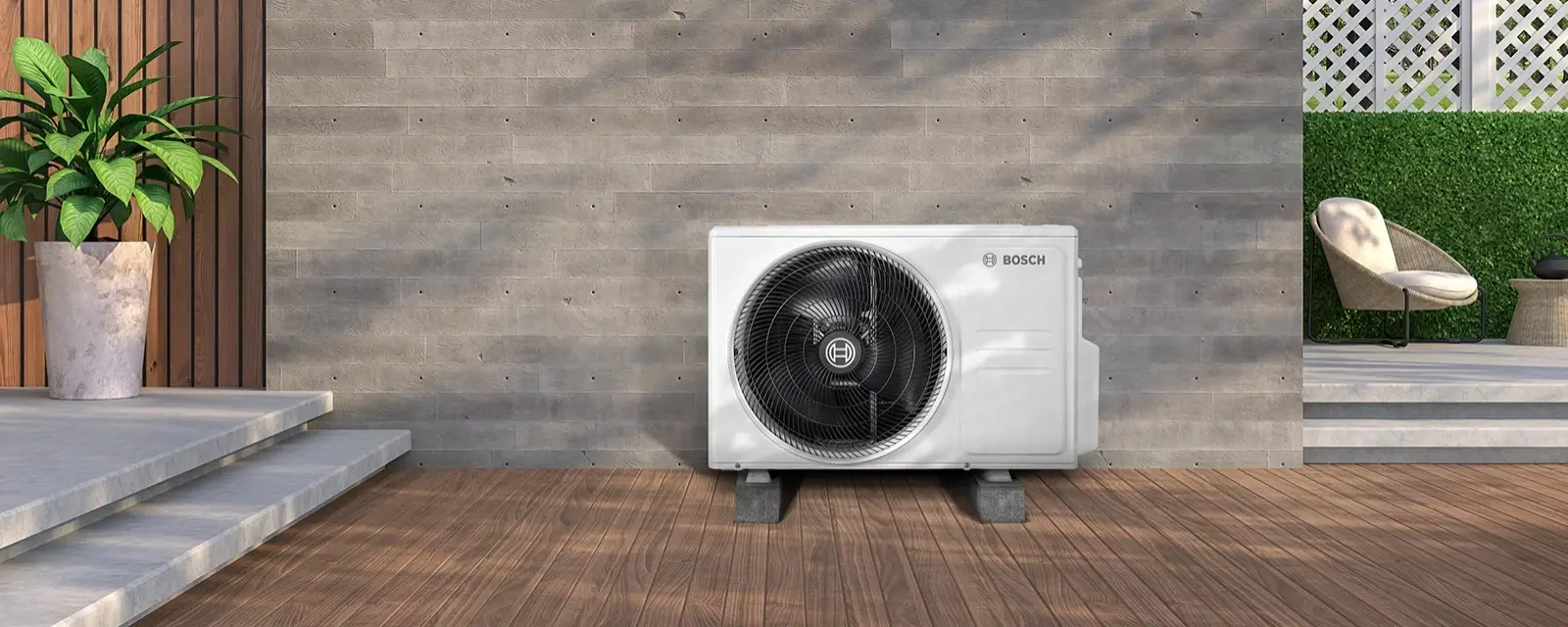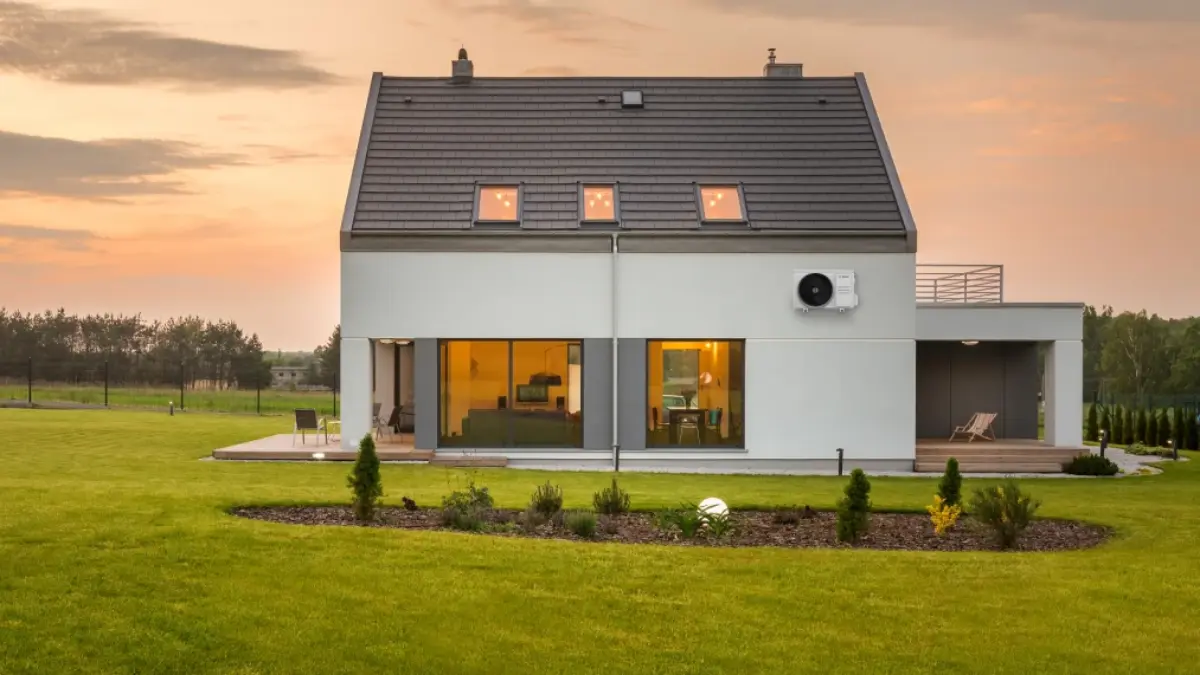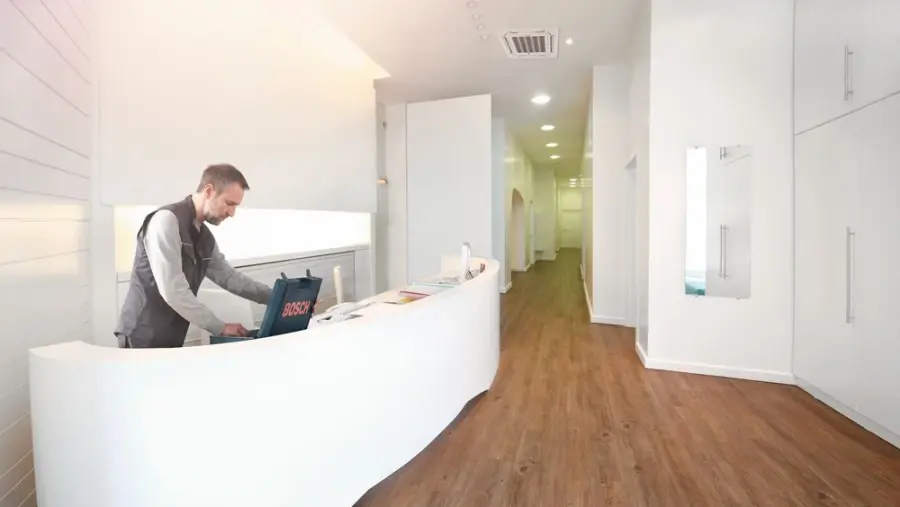
How to calculate the required cooling capacity of your air conditioning system
When moving into a renovated or even newly built home, the nerves of the owners are often strained. Coordinating deadlines with tradesmen for final work, underestimating the total costs of financing or temporarily living on the building site - for many couples and families, these situations are a real stress test. In the truest sense of the word, it is important to “keep a cool head” if the new home is also to be equipped with a correctly dimensioned air conditioning system in the future. That's why our calculator provides you with a simple tool for sizing your new air conditioning system.
In this article, we also shed light on all the relevant background information for you:
- Which factors influence the required cooling capacity
- What is behind the acronym “BTU”
- How to design an air conditioning system correctly in theory - including formulas and sample calculations
- Whether and when you should leave the calculation to a specialist
- The possible consequences of incorrectly dimensioning the air conditioning system
How much cooling capacity does your room require?
Simply enter the key data into the tool and calculate the recommended cooling capacity for your room.
ENTER COOLING LOAD CALCULATOR HERE
What factors influence the required cooling capacity?
Architectural influences
The quality and type of insulation of a building has a direct influence on its heating and cooling behavior - this is taken into account when calculating the required cooling capacity.
Floor-to-ceiling or large windows brighten and warm the rooms in summer, especially if they do not have thermal insulation glazing. The orientation of the windows (e.g. on the south side of the building), as well as whether and when they are shaded by canopies of neighboring buildings or by shutters or blinds during the course of the day, should therefore be taken into account. The construction of the building, for example in the form of the thickness of the outer walls, also plays a role. The walls of a solid construction house, for example, heat up much more slowly than those of a lightweight construction house.
High rooms (for example in old buildings) contain more air volume that needs to be cooled. High air volumes in turn require sufficient circulation. These aspects are also taken into account when selecting a professional air conditioning system.
Finally, the building layout should be analyzed. An open floor plan may be easier to cool, provided that the room air can move or distribute freely. A large number of small rooms or numerous angled areas could require the use of several small cooling units or even lead to a centralized solution being considered.

Environmental influences
These include, above all, regional climatic conditions. Outdoor temperature and humidity play a decisive role in the design of the air conditioning system. Hot, humid climates require significantly higher cooling capacity.
If the building is located in a region with little air movement, this can lead to greater heat accumulation. In densely built-up urban areas, surface sealing with concrete can also lead to an ambient temperature that is 5 to 10 degrees Celsius higher than in rural regions with similar climatic conditions.
Does all this sound plausible? Yes. But how do we use these rather qualitative aspects to obtain a guideline value that can be used to preselect suitable air conditioning systems? To do this, we first need to understand the relevant key figures and variables.
The concept of the British Thermal Unit
Before we illustrate various calculation approaches for individual living space examples, let's first take a brief detour to look at the most important key figure in this context.
What is a British thermal unit (BTU)?
The BTU is a traditional unit of measurement commonly used in the US and the UK. A BTU indicates the amount of heat energy required to raise the temperature of one pound of water by exactly one degree Fahrenheit (at constant pressure). This usually requires 1,055 joules. The key figure dates back to the 19th century and was introduced as part of the scientific discipline of thermodynamics.
The unit BTU per hour (BTU/h) is often used to indicate cooling capacity (for example, in air conditioning systems). In Europe, however, there is a growing trend toward converting this unit to kilowatts (kW), which is more familiar to consumers:
1 BTU/h ≈ 0.000293 kW
Distinction from the EER
Another parameter that you are sure to encounter when selecting air conditioning cooling capacity is EER. The abbreviation stands for “Energy Efficiency Ratio” and indicates the efficiency of air conditioners and cooling devices under standardized conditions. It reflects the ratio of cooling capacity (measured, for example, in BTU/h) to power consumption (in watts (W) or kilowatts (kW)). So if you compare two air conditioners with similar power consumption, the one with the higher EER value will use the electrical power consumed more efficiently to cool your living space. In other words, it works more efficiently.
Calculation formula for estimating the required cooling capacity
The dimensioning of an air conditioner, also known as “sizing” in professional circles, can be quickly illustrated using the BTU concept in the form of a simple calculation formula. The purpose of the formula is to estimate the “cooling load” of your living space. It works as follows:
Area x cooling load factor = required kW value per hour
The variables explained at the beginning (insulation values, window areas, etc.) are taken into account as the cooling load factor in the model. A value of 0.063-0.094 kW per square meter is generally assumed for typical living conditions. However, this value must be adjusted according to the actual conditions on site.
The difference between “heating load” and “cooling load”
The terms “heat load” and “cooling load” are often used interchangeably, although strictly speaking this is not correct.
The heat load represents the total amount of heat generated in a room by
- internal heat sources (e.g., occupants or electrical appliances)
- external heat sources (e.g., sunlight or heat transfer)
- infiltration heat (such as warm outside air entering the building interior).
It therefore indicates how much heat is present in a room or continuously flows into it.
Cooling load, on the other hand, refers to the amount of heat that must be removed by an air conditioning system in order to maintain the desired room temperature.
Strictly speaking, this makes a difference because the cooling load can be lower than the heat load. This is the case, for example, when some heat sources do not affect the room temperature immediately, but with a time delay. This is the case, for example, with heat storage in walls.
The cooling load calculation often takes additional factors into account, such as air circulation or the efficiency of an air conditioning system.
Step-by-step calculation with a specific example
Step 1: Determining the area
To do this, we multiply the length and width of the room to be cooled and obtain the room area to be determined, measured in square meters (m2).
Example: The room is 8m long and 5m wide and therefore has an area of:
8m*5m = 40m2.
Step 2: Adjusting the cooling load factor
As mentioned above, for “normal” living spaces, 0.063-0.094 kW per square meter is used for calculation. Other rooms are adjusted as follows:
- Kitchens: 0.126-0.157 kW per sqm
- Offices and commercial spaces: 0.094-0.126 kW per sqm
Example: The area calculated in step 1 is a regular living space. We therefore use a cooling load factor of 0.063 per square meter per hour. Our 40 m2 living space therefore produces a cooling load of approx. 2.52 kW per hour.
Other factors are taken into account based on the following information:
- Southern window exposure or strong sunlight increases the BTU value by an additional 10-20%.
- Each person permanently present in the room emits between 0.080-0.120 kW of energy.
- Heat-generating devices (computers, printers) further increase the cooling load.
Example: Two people are usually present in the living area. We therefore add 2 * 0.100 kW to the already calculated cooling load of 2.52 kW per hour, giving us: 2.72 kW/h. This value therefore represents the total cooling load that must be continuously handled by the air conditioning system in the room from step 1, taking into account the presence of two people in the area. Alternatively, one could say that the conditions require a nominal cooling capacity of 2.72 kW/h.
Step 3: Determining the power consumption required for cooling
In Europe, most air conditioner manufacturers specify the electrical power consumption of their units in kW. This value can be determined from the cooling load already calculated and the EER value mentioned above as follows:
Electrical power consumption (in kW/h) = cooling load (in kW/h) / EER
However, the EER value is determined under laboratory conditions. For this reason, air conditioner manufacturers also specify the SEER value (seasonal energy efficiency ratio of an air conditioner) in addition to or instead of the EER value. This provides end users with a more realistic assessment of the efficiency of the respective air conditioner for local climatic conditions.
Example: Assuming your new air conditioner has a SEER value of 7.4, we need the following electrical power consumption by the air conditioner for the cooling load of 2.72 kW/h determined above: 2.72 kW/h (cooling load) / 7.4 (SEER) = 0.367 kW/h. So if you run this air conditioner for 5 hours under the specified conditions, it will consume approximately 5 * 0.367 kW/h = 1.835 kWh of electricity to handle the cooling load of 2.72 kW/h * 5 = 13.6 kWh.
Should you leave the calculation of the required output to a specialist?

As demonstrated in the previous section, you can easily perform a rough calculation of the necessary cooling output yourself. This is also good preparation for discussions with an air conditioning specialist. However, we recommend having your calculation validated by trained specialists. The following reasons speak in favor of this approach:
- Complexity of the calculations: Specialists may use software programs that really include all variables in the calculation model.
- Specialist knowledge: Indoor climate experts are familiar with many of the latest technologies and products and have specialist knowledge and expertise in common installation techniques. This can benefit the performance and longevity of your new air conditioning system.
- Regulatory compliance: When inspecting your property, professional installation personnel will identify which regulations apply (for example, regarding possible noise pollution for your neighbors) and take this into account when selecting a system.
In short, hiring a professional is an investment that is always recommended in terms of comfort, efficiency, long-term costs, and possible legal consequences.
Is it worth knowing the cooling capacity and efficiency of a device?
Calculations, consultation with specialists—admittedly, it all sounds like a lot of effort. However, to ensure that you don't purchase an air conditioner that consumes too much electricity or a system that doesn't provide enough cooling or heating capacity, an efficient air conditioner should always be planned by a specialist company.
So why not use our Bosch calculator and the formulas provided above to calculate the air conditioning requirements for your own property? Then compare the values you have calculated with our Bosch products.
Modern Bosch air conditioning systems
You can find a preselection of devices popular with our customers here:
ENTER PRODUCTS HERE
Try out the 3D air conditioning simulation now!
Simply scan the QR code with your smartphone and immerse yourself in the world of 3D products. No app download is required.
INCLUDE PICTURE OF QR CODE HERE